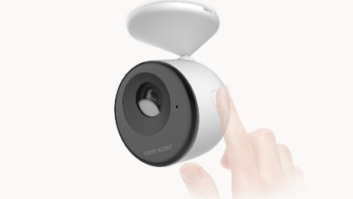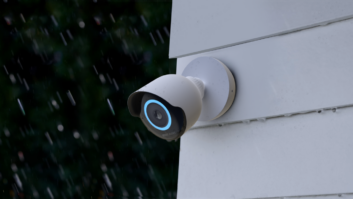New York –
staged an
elaborate multinational event late Tuesday evening/Wednesday morning to unveil
the company’s long-awaited first two mirrorless compact interchangeable-lens
cameras and lenses that make up the Nikon 1 System.
The new cameras include models J1 and V1. Both incorporate a Nikon-made
10.1-megapixel CX-format CMOS sensor (measuring 13.2mm by 8.8mm) and a new
dual-core Expeed 3 image processing engine. Both were developed to deliver fast
autofocus and high-speed performance.
The Nikon 1 system represents the first camera system Nikon has
developed from the ground up since the Nikon F system was introduced more than 50
years ago.
“It’s a new market and a new category that has been started from
the ground up,” said David Lee, Nikon USA senior VP.
Steve Heiner, Nikon senior technical manager, said the compacts
are targeted at a different Nikon user than it has traditionally served. The
cameras were designed to offer the flexibility of an advanced interchangeable-lens
camera system with the convenience of a fully automatic compact
point-and-shoot.
He told TWICE he expects the format will not appeal to Nikon’s
traditional d-SLR users, who would be more likely to use the advanced manual
P7100 point-and-shoot for a second compact alternative camera.
Instead, Nikon is looking to capture young, socially connected
adults who may or may not be traditional memory keepers in the home, said Sharon
Henley, Nikon product life cycle control
senior manager.
That Expeed 3 system was specially developed to maximize power
efficiency while improving low noise performance and color tones.
The cameras will shoot at 10 fps with full adaptive AF and full
resolution, and up to 60 fps at full resolution with AF locked.
The more compact V1 adds a stereo mic input and multi-accessory
port for an external flash, GPS and other accessories. Nikon said the V1 was
designed as “the world’s smallest and lightest” interchangeable-lens camera.
It also steps up to include a 1.4 million-dot high-resolution electronic
viewfinder that automatically activates when the camera is raised to the eye.
It also employs a 920,000-dot 3-inch LCD, a high-speed electronic shutter and a
magnesium alloy body.
In addition to 1,920 by 1,080 at 30p and 60i HD video, both
cameras will record video in 1,280 by 720
at 60p, and slow-motion video at 640 by 240 and 400 fps or 320 by 120 at 1,200 fps.
The V1 will capture still images and full-resolution video
without interruption. Its Motion Snapshot feature captures one second of 60 fps
video around the still shot, then processes the video down to 24 fps and
combines it with the still image to offer a 2.5-second video clip of slow-motion
action ending with a freeze-frame still.
Another new feature in the cameras, Smart Photo Selector, offers
a virtual fail-safe still image shooting system that captures 20 images with
one press of the shutter and then intelligently evaluates each image for focus,
exposure, composition, smiling, etc., narrowing the selection down to the best
five frames, the best presented first.
To support the new cameras, Nikon has developed new System 1 lenses
that are smaller than those used by its traditional d-SLRs, but Nikon will
offer an F-mount adapter to use many of Nikon’s traditional d-SLR lenses with
the new compact camera models (at a 2.7x crop factor).
The new lenses include a 10mm, f2.8 (27mm equivalent) pancake; a
10-30mm, f3.8-5.6 (27-81mm equivalent) Vibration Reduction (VR) II standard
zoom; and a 10-100mm, f4.5-5.6 (81-297mm equivalent) VR II long zoom.
For low-light shooting, the cameras feature a 100 to 3,200 ISO
range (with one high step to 6,400), a 3-inch LCD, and a contrast-detect
73-point autofocus system that places the phase detect sensors directly on the
CMOS imager for faster performance. Nikon calls it the world’s fastest AF
system.
The cameras use dual through-the-lens (TTL) metering systems,
including a center-weighted matrix system with a 4.5mm circle, and spot
metering system using a 2mm circle.
The cameras are slated for delivery in stores Oct. 20. The
suggested retail for each model bundled with a 10-30mm lens is $650 for the J1
and $900 for the V1.
Henley told TWICE that Nikon is planning a series of ads
supporting the Nikon 1 System cameras to begin around the market release time.
It will include national spokesman Ashton Kutcher and will feature TV, print
and online vehicles.
Spending on the Nikon 1 ad campaign will be incremental to the
rest of Nikon’s overall campaign, which will roughly pattern last year’s budget
size.









